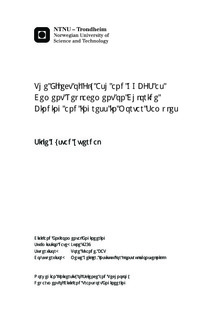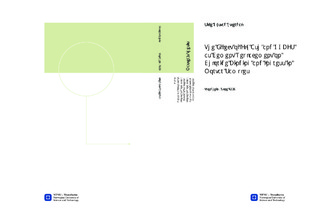| dc.contributor.advisor | Kvande, Tore | nb_NO |
| dc.contributor.advisor | Geiker, Mette | nb_NO |
| dc.contributor.author | Ytterdal, Silje Gystad | nb_NO |
| dc.date.accessioned | 2014-12-19T11:33:44Z | |
| dc.date.available | 2014-12-19T11:33:44Z | |
| dc.date.created | 2014-09-06 | nb_NO |
| dc.date.issued | 2014 | nb_NO |
| dc.identifier | 744130 | nb_NO |
| dc.identifier | ntnudaim:11506 | nb_NO |
| dc.identifier.uri | http://hdl.handle.net/11250/233042 | |
| dc.description.abstract | Reinforcement corrosion has been identified as the predominant deterioration mechanism for reinforced concrete structures (fib, 2006), and is usually caused by carbonation or chloride attack. Chloride- induced corrosion is triggered by an increasing concentration of chloride ions in the pore solution. Corrosion seriously affects the serviceability and safety of concrete structures, and can cause major maintenance costs. Therefore, precise information and understanding of chloride ingress and chloride binding may enable better prediction of service life of concrete structures. The aim of this study is to gather information on chloride binding capacity of supplementary cementitious materials and its effect on chloride profiles. The use of fly ash and ground granulated blast furnace slag are known to increase the binding capacity thus lowering the free chloride content available for corrosion initiation. This can most likely be linked to a high alumina content in which chemical binding capacity increases. Additionally, blast furnace slag and fly ash can increase the formation of C-S-H which enhance the physical binding capacity. The effect of chloride binding on chloride ingress was investigated in addition to the binding capacity of fly ash cement and blast furnace slag cement. Chloride binding isotherms and chloride profiles were determined for mortars with w/c= 0.4 and 6% silica fume addition. Ground granulated blast furnace slag (50%) and fly ash (30%) were included as partial replacement for Portland cement. A variant of the equilibrium method was used to determine the chloride binding isotherms. Hydrated samples were grounded and exposed to solutions of CaCl2 and NaCl of varying concentrations at 20°C. The determined binding isotherms were used to calculate bound and free chloride profiles for mortars exposed to NaCl for 6 months. The obtained results agree with much of the present literature. Small standard deviations and clear trends indicate reliable experimental data. One of the findings of the study is that various cementitious materials exhibit different binding capacities. Of the three tested mortars, the mortar with blast furnace slag resulted in the highest binding capacity followed by the fly ash blended cement. Ordinary Portland cement (OPC) had the lowest binding capacity. A non- linear relationship between free and bound chlorides were found, in which the Freundlich and Langmuir isotherm provided a good fit. Due to varying binding capacities, it follows that binding should be included when comparing chloride ingress in various binders. Chloride profiles were produced in order to evaluate the effect of binding on chloride profiles. The high binding capacity of the ground granulated blast furnace slag cement resulted in a lower amount of free chlorides in the pore solution. It appears as the binding isotherm determined by CaCl2 gives a better reflection of the binding behavior compared to the NaCl binding isotherm. Generally, the apparent diffusion coefficient is determined by fitting of total chloride profiles to the solution of Fick s 2nd law of diffusion. The approach is questionable as it rests on number of simplifying assumptions that rarely are met in a real structure. It seems more appropriate to base the fitting on free chlorides, as only the free chlorides are influenced by diffusion. Therefore, the apparent diffusion coefficient and the surface concentration were determined by fitting of both total and free chloride profiles. The results proved that the coefficient is reduced by 28 - 35 % if binding is included. | nb_NO |
| dc.language | eng | nb_NO |
| dc.publisher | Institutt for bygg, anlegg og transport | nb_NO |
| dc.title | The Effect of Fly Ash and GGBFS as Cement Replacement on Chloride Binding and Ingress in Mortar Samples | nb_NO |
| dc.type | Master thesis | nb_NO |
| dc.source.pagenumber | 97 | nb_NO |
| dc.contributor.department | Norges teknisk-naturvitenskapelige universitet, Fakultet for ingeniørvitenskap og teknologi, Institutt for bygg, anlegg og transport | nb_NO |

